No dig gardening: The 7 layers of a no dig garden explained
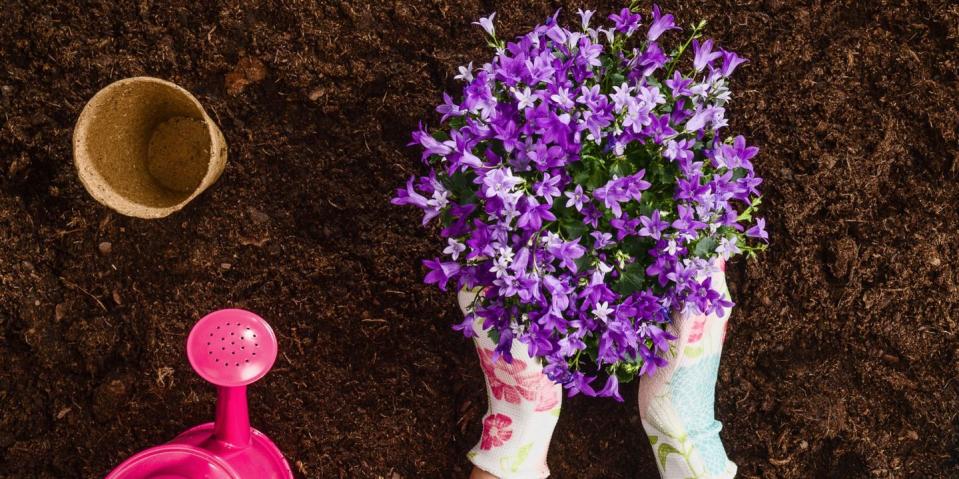
No dig gardening is one of the biggest gardening trends of recent years, but what exactly is it and how can it help your garden? Country Living speaks to several experts on where to start with the no dig gardening method and why exactly it's so beneficial for the earth.
One of these experts is Charles Dowding, whose name has become synonymous with no dig gardening. He's actually been an advocate of the no dig method since he first started growing vegetables back in 1981. In fact, much of his career has been dedicated to teaching others about the no dig approach, both in the form of his books and successful YouTube channel.
"No dig leaves soil undisturbed, and you feed the masses of soil life with organic matter on the surface, as happens in nature, to maintain drainage and aeration," says Charles. "No dig even works on all types of soil, including heavy clay."
What is no dig gardening?
"No dig gardening is very simple. It's a method of cultivation that aims for minimal disturbance of the soil — and can be adopted by anyone. Because it's such a healthy way of growing and the soil health stays so good from not being disturbed, you get a stronger growth of your plants," explains Charles.
"You need less fertilisers, less pesticides, very few slug pellets. It ticks so many other boxes too, such as keeping your soil moist," says Charles, who regularly posts about no dig gardening on his popular Instagram account.
In basic terms, a no dig garden is a growing method which feeds your soil, helps control weeds and saves your back in the process. You simply add layers of nitrogen- and carbon-rich materials in which to grow your plants in. These layers break down over time to create a rich growing environment above the soil.
You can adopt no dig methods even if you have a small garden and it doesn't matter whether you’re growing flowers, shrubs or vegetables. No dig isn't actually a new concept, it's an organic approach to cultivation that works in line with nature’s systems and is actually pretty ancient.
Why is no dig gardening beneficial?
No dig gardening is beneficial to your soil, your garden and the environment. "Soil stores a lot of carbon, so the more we dig the more we release carbon into the atmosphere," says Gardener and no dig advocate Emma Jo Real-Davies. "There’s lots of evidence to suggest that digging damages the soil as it upsets its structure, so by leaving it alone, and applying a thick layer of mulch, we’re improving the soil and its structure."
Another benefit of no dig gardening is that it can minimise weeding. The layers of newspaper you put on top of the weeds (more on this below) block out light so, over time, that stops them growing.
How do you start a no dig bed?
There are several different ways to create a no dig bed. You can:
Make a lasagne garden – a type of flat raised bed with layers of compostable material.
Try hugelkultur – beds made in a similar way, but with a core of rotting wood at the heart, and a mounded shape.
Bring in straw bales, top these with compost, or create compost filled planting pockets, and plant into those rather than into the soil.
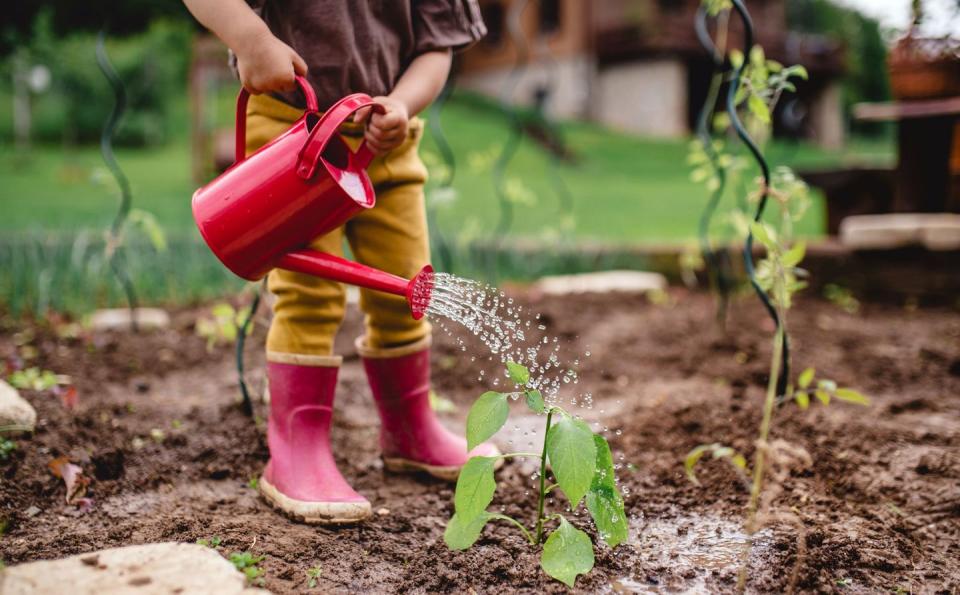
Step-by-step guide to the no dig gardening method
1. Prepare area and cover in light-blocking material
Remove any really large weeds by slashing them from the ground (rather than digging them out) and putting them on the compost heap. "Then you need to put down a layer of light-blocking material onto your patch – torn up newspaper is excellent because it breaks down into the soil as it gets moist and plant roots will eventually penetrate through it," Sarah Janisch-Corser, Head of the Kitchen Garden at Cromlix Hotel, owned by Andy Murray, told CL.
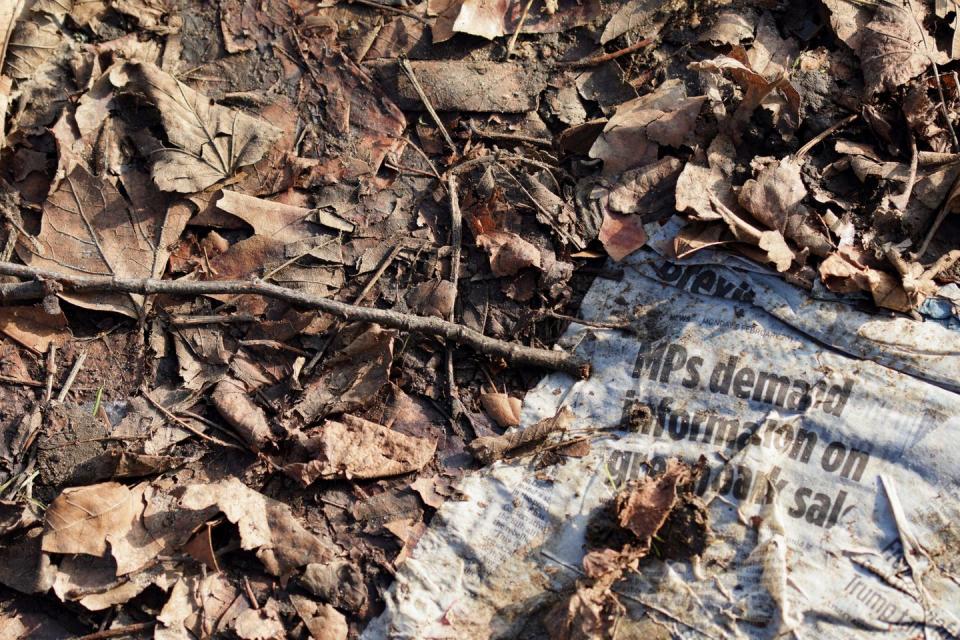
"If you are creating a no dig garden onto grass, you should add a layer of manure and lime first to break down the grass," adds Sarah. "This would go under the layer of newspaper. If you are creating a no dig garden on a hard standing, you would put down twigs first to prevent pooling of water."
2. Add your layers
"Next you want to add a layer of kitchen scraps (vegetable peelings, fruit waste, loose tea), then a layer of manure, or a manure/compost mix. (The compost can be home made from leaves, grass cuttings, plant prunings).
Then, add a layer of straw. Then another layer of manure and compost. And then, finally, a final top layer of straw. After you've put down each layer, water it well to leave it nice and moist," advises Sarah.
Your layers in order:
If creating a bed on top of soil, go straight to layer 2. If creating a bed on top of grass: manure and lime. If creating a bed on top of a hard surface: twigs.
Light-blocking material, like newspaper or cardboard
Organic food waste or compost
Manure or manure/compost mix
Straw
Manure or manure/compost mix
Straw
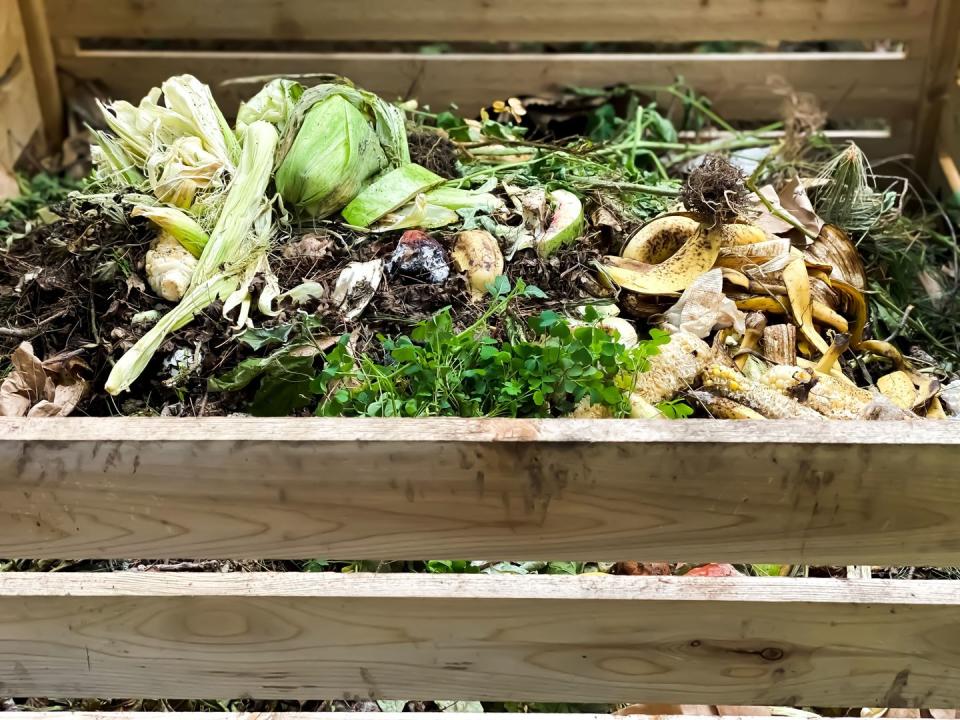
3. Make wells for planting
Once you have built up your layers, you create little wells about 10cm deep in the top layer of straw and fill them with compost. Then plant your seeds, seedlings or saplings into the wells.
Why are there so many layers in a no dig garden?
The layers in lasagne gardens and hugelkultur mounds are just like the layers in a composting system. It is just that rather than having a dedicated composting area, you are composting right where your plants are to grow (though you should still have a separate compost system too if possible).
"At the base, where you want to create your new growing area, you will usually spread cardboard over the soil (or lawn). This stops grass or weeds growing through from beneath as the bed becomes established," Elizabeth Waddington, from Horticulture.co.uk tells us.
Next, add layers of brown (carbon rich) and green (nitrogen rich) materials and try and make each layer around 5-10cm thick.
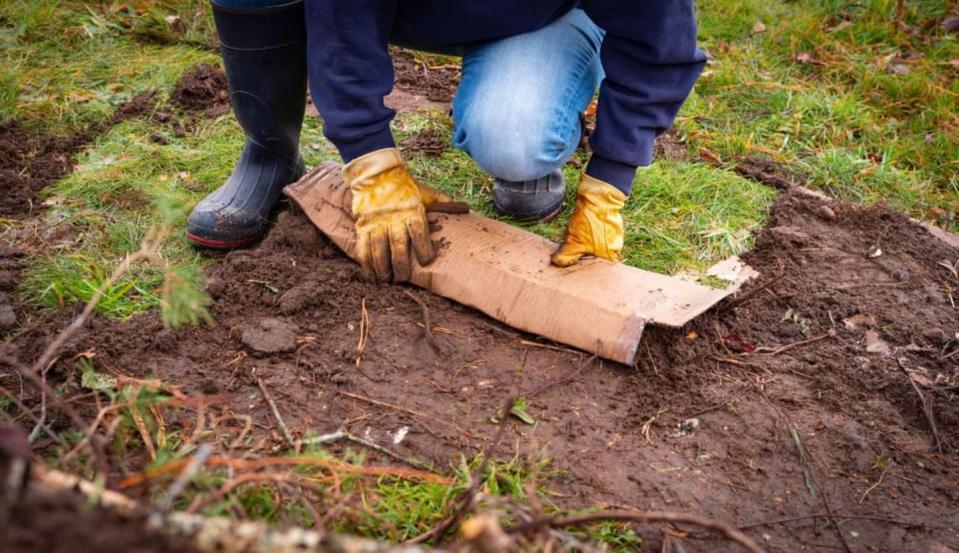
Ideas for carbon-rich layers are: Untreated and shredded paper/card, autumn leaves, straw, bracken or shredded/ chipped woody material.
Ideas for nitrogen rich layers are: Well-rotted manures, kitchen scraps, grass clippings, and other green leafy materials.
"After building up several layers, you can top your new bed with a layer of compost/ loam and plant it up right away. Sow a cover crop or green manure if it is not time to plant crops,' adds Elizabeth.
What do you need to do no dig gardening?
a patch of ground or an allotment
cardboard or newspaper
access to water
manure
organic waste/compost
seeds/plants
gardening gloves – shop our favourites here
Suitable clothes for gardening
a trowel for spreading layers (not digging the soil) if you'd rather not use your hands
How long does it take for a no dig garden to break down?
How long it takes for the materials in your no dig garden to break down will depend on exactly what materials you used. Typically, as in a cold composting system, the materials will have decomposed to create a rich compost or humus in around 6 months to a year.
"Also, take note that the level in the original bed will sink considerably," says Elizabeth.
The beauty of a no dig garden is the fact that you can keep adding mulches of organic material each spring, and throughout the year. So you will always have plenty of organic matter at various stages of decomposition, releasing their nutrients for your growing plants and feeding the microorganisms in the bed and the soil below.
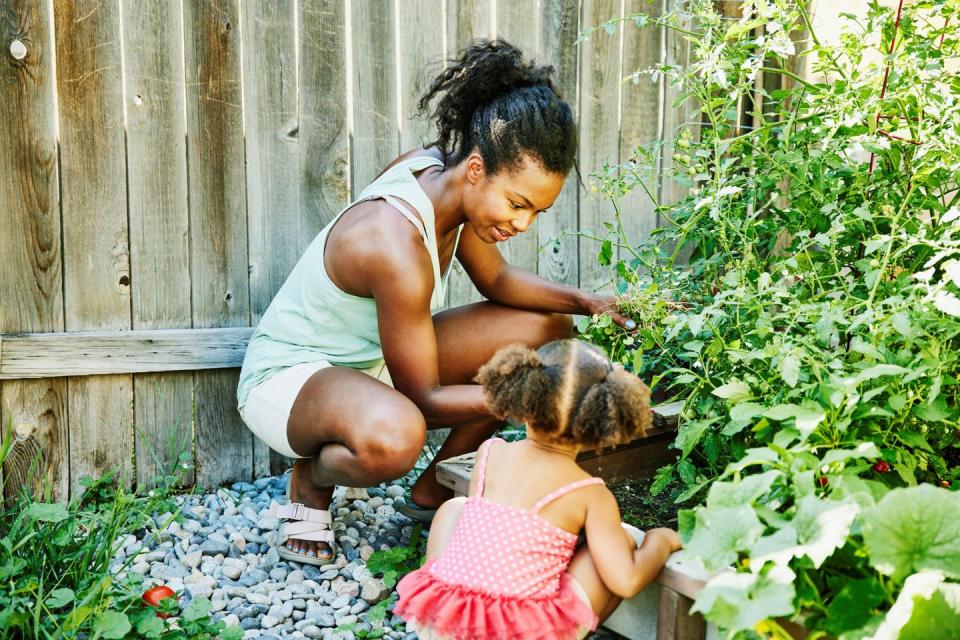
Does soil need digging after say 4 to 5 years of no digging?
"No, this is a myth and completely untrue," says Charles. "For example, my garden at Lower Farm had it’s best year in the horrible wet summer of 2012, when many growers and gardeners struggled even to get on their land, and that was its 15th consecutive year of no dig."
You Might Also Like

